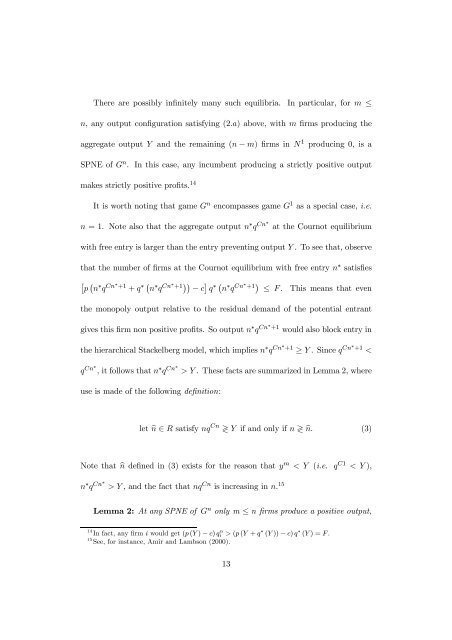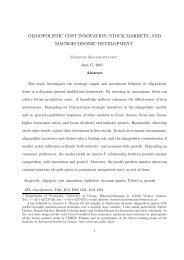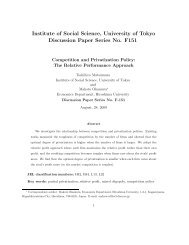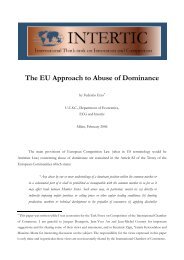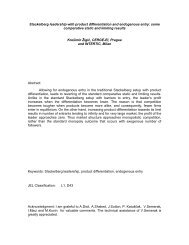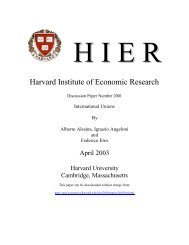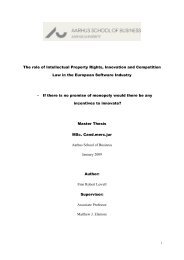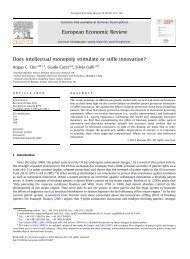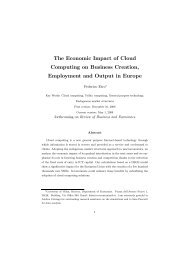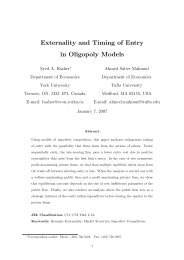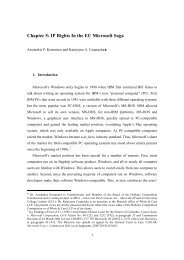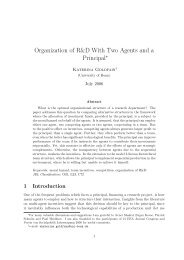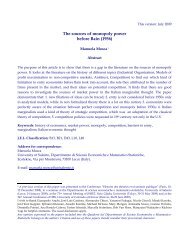"Endogenous Timing with Free Entry" by A. Tesoriere - Intertic
"Endogenous Timing with Free Entry" by A. Tesoriere - Intertic
"Endogenous Timing with Free Entry" by A. Tesoriere - Intertic
You also want an ePaper? Increase the reach of your titles
YUMPU automatically turns print PDFs into web optimized ePapers that Google loves.
There are possibly infinitely many such equilibria.<br />
In particular, for m ≤<br />
n, any output configuration satisfying (2.a) above, <strong>with</strong> m firms producing the<br />
aggregate output Y and the remaining (n − m) firms in N 1 producing 0, isa<br />
SPNE of G n . In this case, any incumbent producing a strictly positive output<br />
makes strictly positive profits. 14<br />
It is worth noting that game G n encompasses game G 1 as a special case, i.e.<br />
n =1. Note also that the aggregate output n ∗ q Cn∗<br />
at the Cournot equilibrium<br />
<strong>with</strong> free entry is larger than the entry preventing output Y . To see that, observe<br />
that the number of firms at the Cournot equilibrium <strong>with</strong> free entry n ∗ satisfies<br />
<br />
p<br />
<br />
n ∗ q Cn∗ +1 + q ∗ n ∗ q Cn∗ +1 − c q ∗ n ∗ q Cn∗ +1 ≤ F .<br />
This means that even<br />
the monopoly output relative to the residual demand of the potential entrant<br />
gives this firm non positive profits. So output n ∗ q Cn∗ +1 would also block entry in<br />
the hierarchical Stackelberg model, which implies n ∗ q Cn∗ +1 ≥ Y .Sinceq Cn∗ +1 <<br />
q Cn∗ ,itfollowsthatn ∗ q Cn∗ >Y. These facts are summarized in Lemma 2, where<br />
use is made of the following definition:<br />
let n ∈ R satisfy nq Cn ≷ Y ifandonlyifn ≷ n. (3)<br />
Note that n defined in (3) exists for the reason that y m (p (Y + q ∗ (Y )) − c) q ∗ (Y )=F .<br />
15 See, for instance, Amir and Lambson (2000).<br />
13


